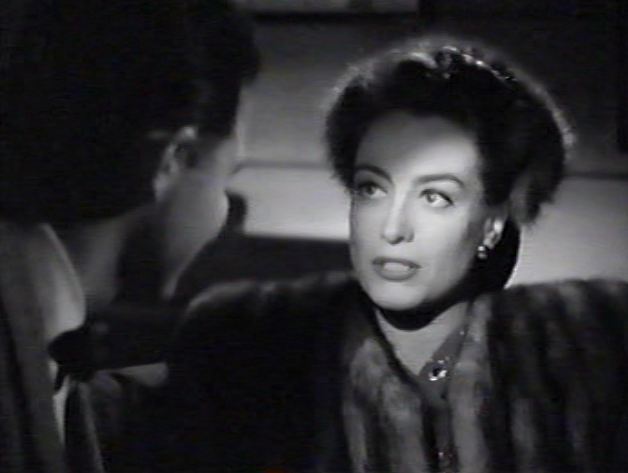 When it comes down to it, it is always about the money. The first of this month’s Criterion collection releases is the 1945 noirish melodrama Mildred Pierce where the lead character finds that the main reason for everything that happens is down to the greenbacks. Her first husband is unemployed and it is down to Mildred to do what she can to put food on the table and provide everything to ensure their daughters want for nothing. Once out of that situation money is still the primary goal as Mildred flexes her business muscles and makes a name for herself. All the troubles that follow has its roots in the desire to make a profit.
When it comes down to it, it is always about the money. The first of this month’s Criterion collection releases is the 1945 noirish melodrama Mildred Pierce where the lead character finds that the main reason for everything that happens is down to the greenbacks. Her first husband is unemployed and it is down to Mildred to do what she can to put food on the table and provide everything to ensure their daughters want for nothing. Once out of that situation money is still the primary goal as Mildred flexes her business muscles and makes a name for herself. All the troubles that follow has its roots in the desire to make a profit.
The film is a mixture of a typical film noir and melodrama. It is set up like a noir film with the strong protagonist, the story told in flashbacks and the superb use of lighting and shadows. The film opens on a murder with a man being gunned down in a plush beach house. The last word out of his mouth is “Mildred”. A figure is seen fleeing the scene but we are none the wiser to who is the culprit. The film then twists and turns taking the audience on a journey where they are only seeing half of the story. When the police start to question Mildred she takes them back to how she found herself in this situation.
For many it is regarded as the movie that defines the career of Joan Crawford. It is difficult to imagine anyone other than her in the title role. She is perfect as the strong willed but vulnerable woman who is striving to provide for her family on her own terms no matter the cost to her relationships or as seen with the suicide bid, her sanity. The character allows Crawford to play to her strengths as an actor. She uses her stunning looks, especially her eyes, to convey emotion in a way that would be lost with extended scenes of dialogue.
 Crawford is backed with a strong supporting cast. Ann Blyth as her manipulative daughter almost steals the limelight from the lead. She is especially powerful in the role and her ability to hurt her mother with a single barbed comment is brutal. She has no redeeming qualities and she becomes the figure of hate for the audience. It is no surprise that Blyth was nominated for an academy award for the performance.
Crawford is backed with a strong supporting cast. Ann Blyth as her manipulative daughter almost steals the limelight from the lead. She is especially powerful in the role and her ability to hurt her mother with a single barbed comment is brutal. She has no redeeming qualities and she becomes the figure of hate for the audience. It is no surprise that Blyth was nominated for an academy award for the performance.
The film is a visual treat. You would expect no less from Michael Curtiz, the director of Casablanca. It is the attention to detail in every scene that makes it special. The combination of set design, costumes and character styling are used to mark out the different periods of Mildred’s story. In her first marriage she is relatively plain with natural looks and living in very modest accommodation. As she begins her journey to business success she takes on a more stylised look and introduces the famous shoulder pads resulting in the appearance of someone who is wearing some form of armour instead of clothing.
The lighting stands out as a real highlight of the film. Initially in film noir light and shade were used to hide the fact that the productions has relatively modest budgets. A bit of darkness hides a lot of flaws. Here it is used to emphases moods and drama. The characters move in and out of the shadows in a highly choreographed fashion. A step into the full light is used several times when the tension in a scene is heightened. It is used sparingly though as overuse tends to lessen the impact.
The Criterion restoration brings the film back to life with its clean print and soundtrack. The Blu-Ray release features a couple of notable extras. There is a really entertaining Joan Crawford biographical feature that is over ninety minutes long. It covers her entire career in detail and has some nice insights and recollections from her co-stars and friends. In addition there is an entertaining interview with Ann Blyth form 2006 where she recalls her time working with Joan Crawford. The quality of the featurette is a little basic but the content more than makes up for it.
- Arrow Video Titles For March 2025 - January 5, 2025
- G20 – Preview - January 5, 2025
- Royal Opera House launches Maria Callas tour featuring Angelina Jolie’s costumes from new biopic Maria - January 5, 2025

